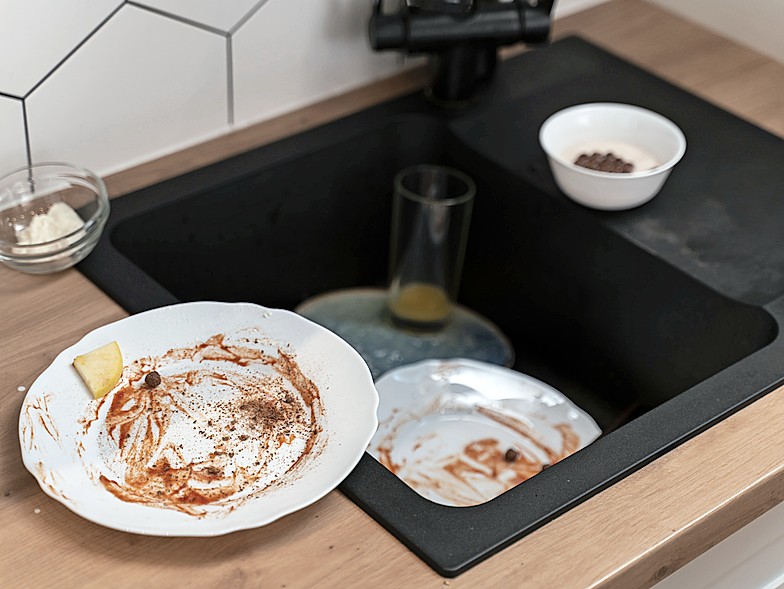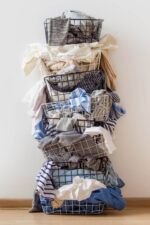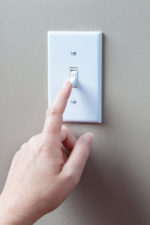9 Reasons Your Home Looks Messier Than It Is
For a lot of us, our home has become a multipurpose zone, sometimes even functioning as both a living space and an office. It is easy for the clutter to sneak in, stealthily doubling and tripling until you look over one day and wonder where your dining room table went. From a sink full of dishes to unmade beds, there are countless culprits that can undermine our best intentions for a clean and tidy home. Watch out for these repeat offenders on the path to reclaiming your space.

1. Messy sink
It’s tempting to put those dirty dishes in the sink and go about your day, telling yourself you’ll come back to them later. But by the time “later” rolls around, you are ready for bed, and scrubbing pans does not sound appealing. If this is you, start building a habit of washing dishes or loading them into the dishwasher after every meal. If there isn’t time, at least pour water into the dishes and pans so they will be much easier to clean later.
2. Stained upholstery
Those little spots and marks on your couch or dining chair cushions can give the impression that your home is dirty (even if it’s really not). Try using a handheld upholstery cleaning machine like the Little Green from Bissell to suction out any grime or food spills. Or, if you have removable cushion covers, pretreat the stains and then throw the covers in the washing machine.

3. Loose cords
With all the electronics and appliances in homes today, corralling cords can be quite the challenge. Whenever possible, use furniture to hide them; you can even tape them to the bottom or back of a dresser or desk so they are completely obscured. However, avoid running cords underneath area rugs; though it seems like a convenient solution, it can also be a major fire hazard.
4. Mail on counters
Mail is the bane of many a home dweller’s existence. If you don’t have a good system for triaging it, you can end up with a counter (or table) full of envelopes and paper. As soon as you bring it inside, throw out whatever is not essential and place bills or forms that need to be taken care of expeditiously in a designated tray. For papers and information that need to be saved long term, use a small filing box with dividers labeled with categories like “Insurance,” “Car Information,” and “Receipts.”

5. Unmade beds
Your parents were right about this one: making your bed when you wake up is a great habit to start. It initiates a morning routine, and it creates the illusion of immediate tidiness. And what’s more inviting than a made bed at nighttime? One helpful trick is to keep your bedding simple so you don’t have to put on five throw pillows every morning and remove them every evening.
6. A surplus of throw pillows and blankets
Speaking of excess bedding, this rule applies for the rest of your house too. Couches and chairs don’t need to be covered in multiple throw blankets and pillows. So resist the urge to line up pillows like they’re a row of baby cousins in a family photo. Choose one or two pillows for a couch, and carefully fold or drape a single throw blanket over an arm or back cushion for when you want to be cozy. If you often have multiple people lounging at the same time, keep extra blankets in an oversized wicker or fabric basket nearby.
7. Returns by the front door
It’s common for the packages you’re returning to end up in a pile near the front door. Whenever possible, put parcels in your car instead so they are more likely to end up where they need to go. If it’s not safe to leave them there, place them in a bin inside a piece of entryway furniture or even in a woven basket by the door.
8. Too many knickknacks
Even if your home is spotless, too many tchotchkes can create visual clutter and make a room appear messy. Pare down and curate your items so the ones you choose to display will feel more intentional. When in doubt, use Marie Kondo’s method of asking if each object sparks joy to help you decide what stays and what goes.

9. Too many toiletries
Too many skin care and other products can quickly overtake a bathroom counter. To help visually organize it, get a decorative tray to compile your most used items in one place, and move the rest to any under-cabinet or other storage space to keep them stowed out of sight.
With all the other responsibilities of life, maintaining a clean and tidy home can feel like a huge burden—but it doesn’t have to be. Now that you are aware of some common problems and armed with tips to solve them, you won’t just be able to create a more aesthetically appealing home; you’ll also get to reap the benefit of greater calm and peace of mind that tidiness provides.


















